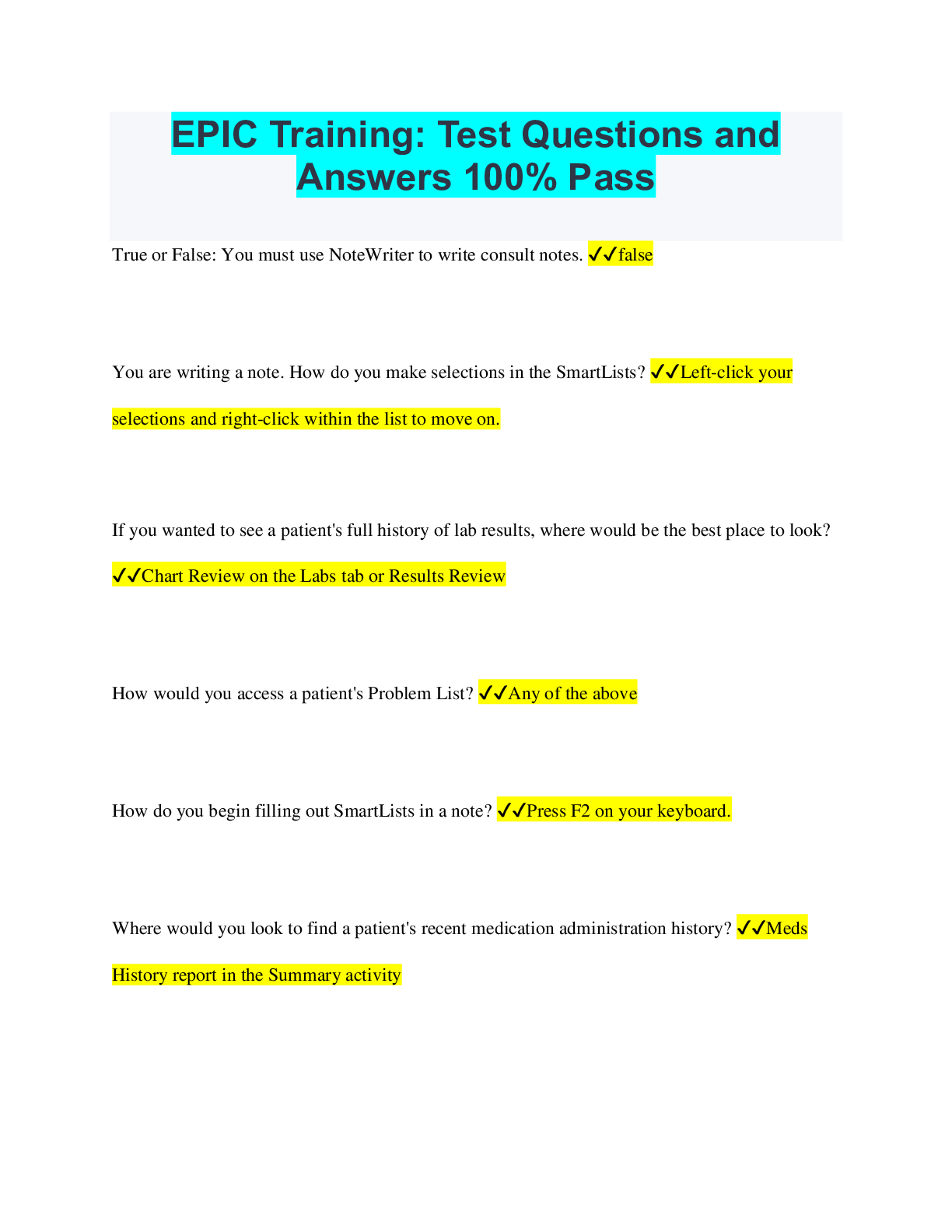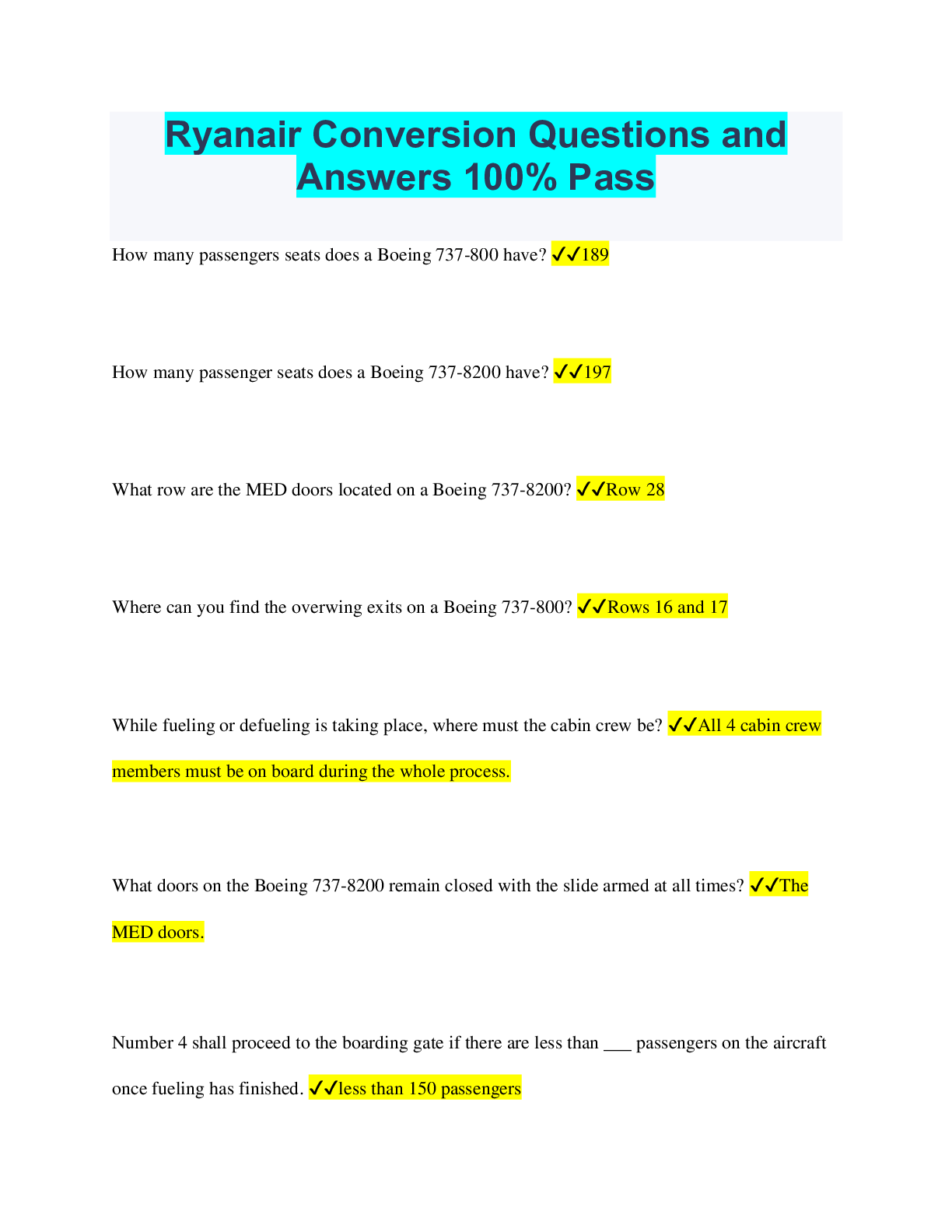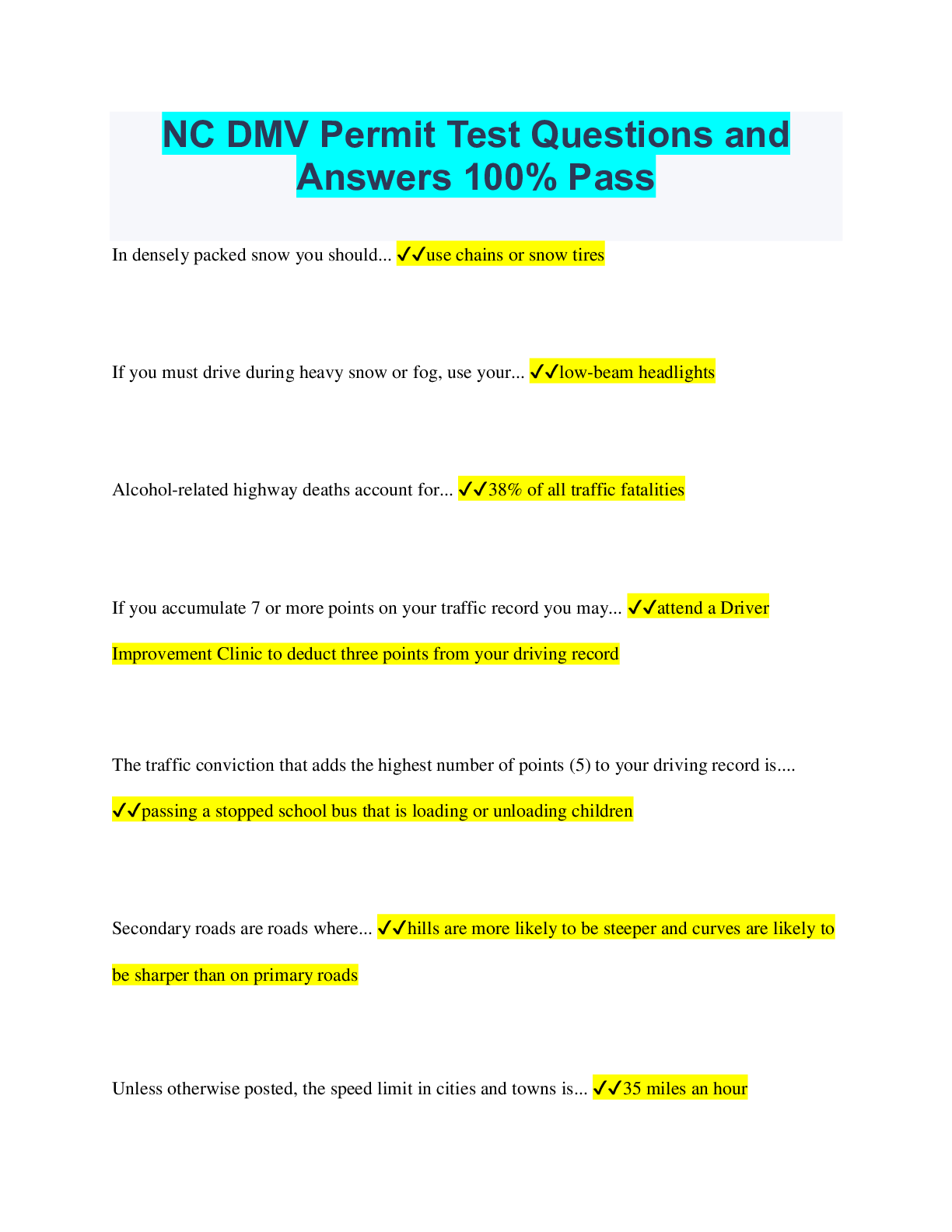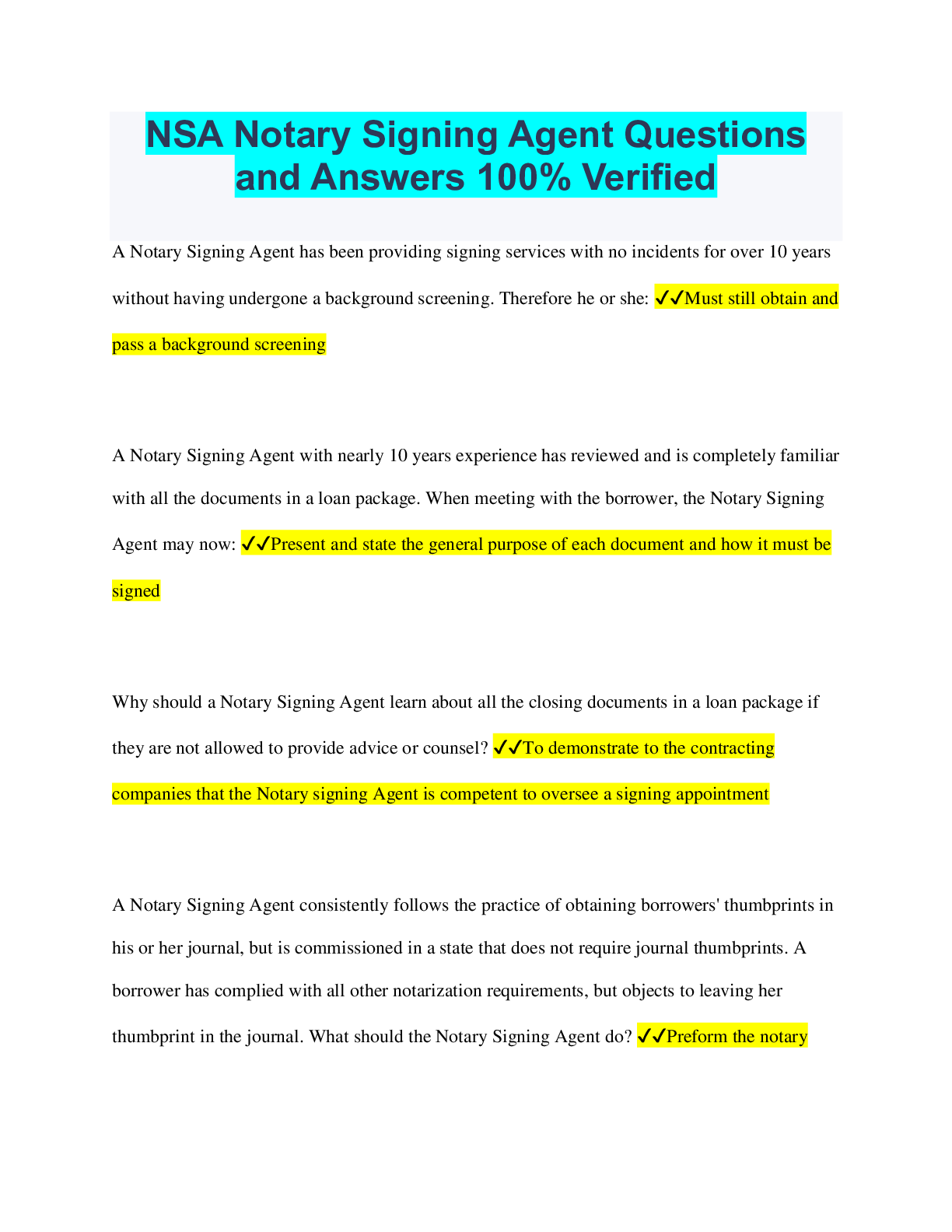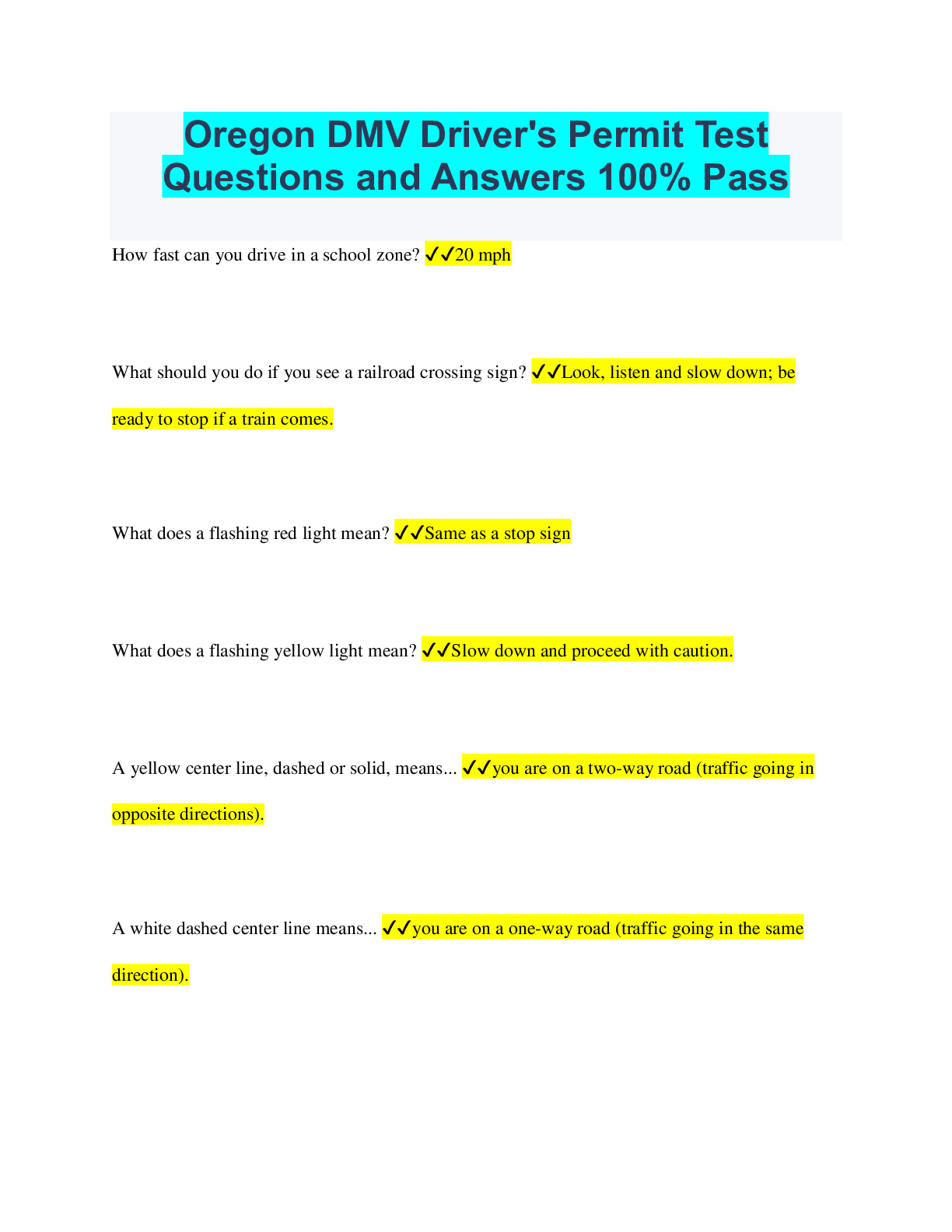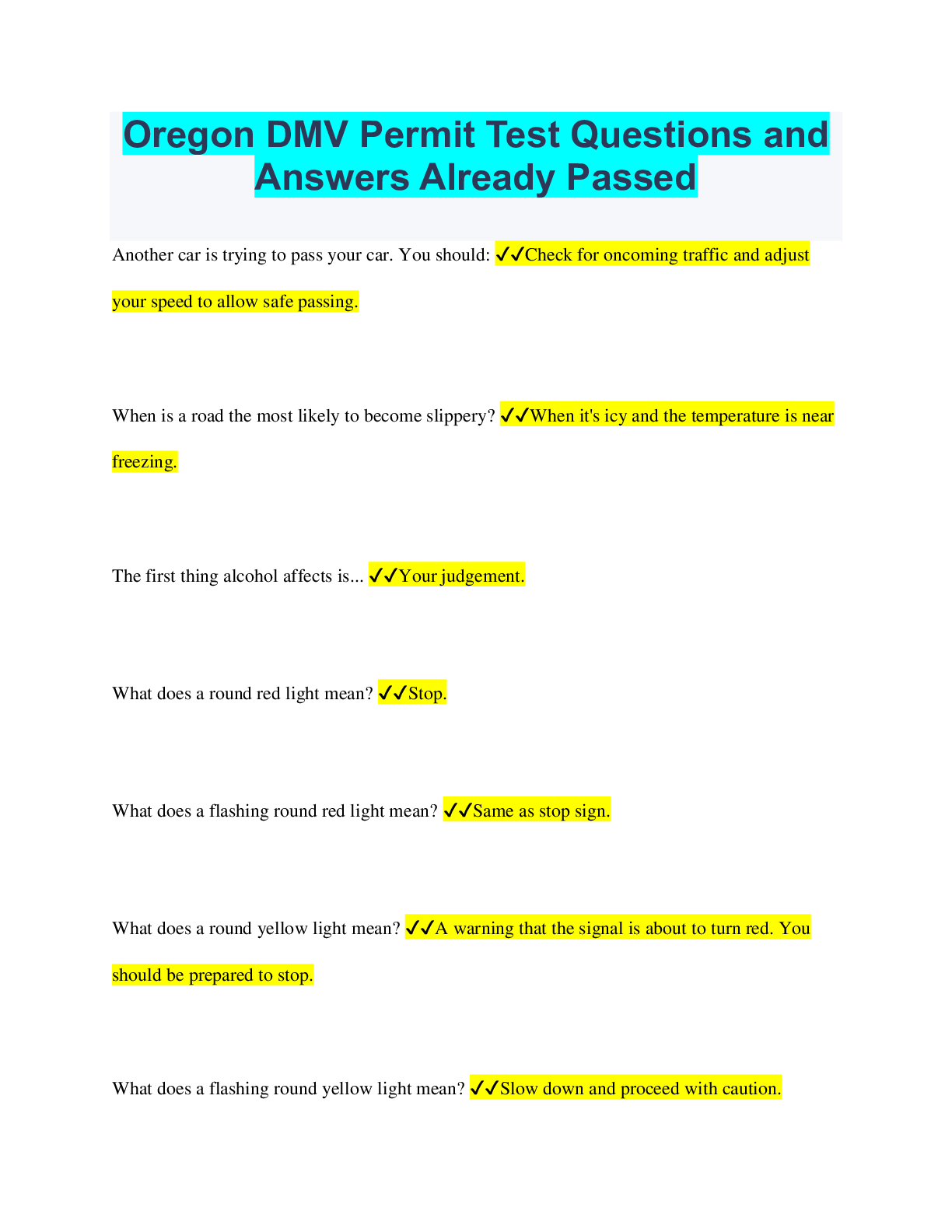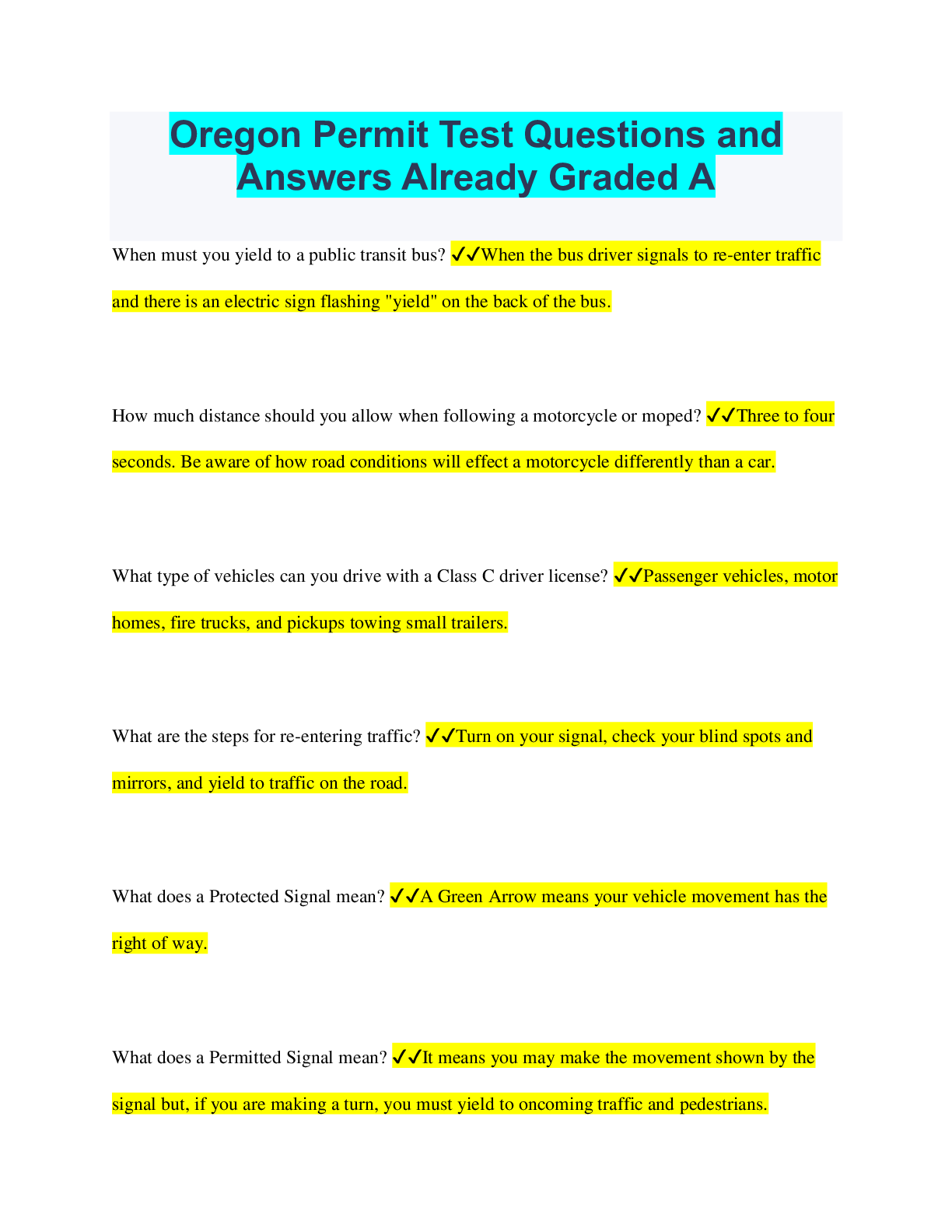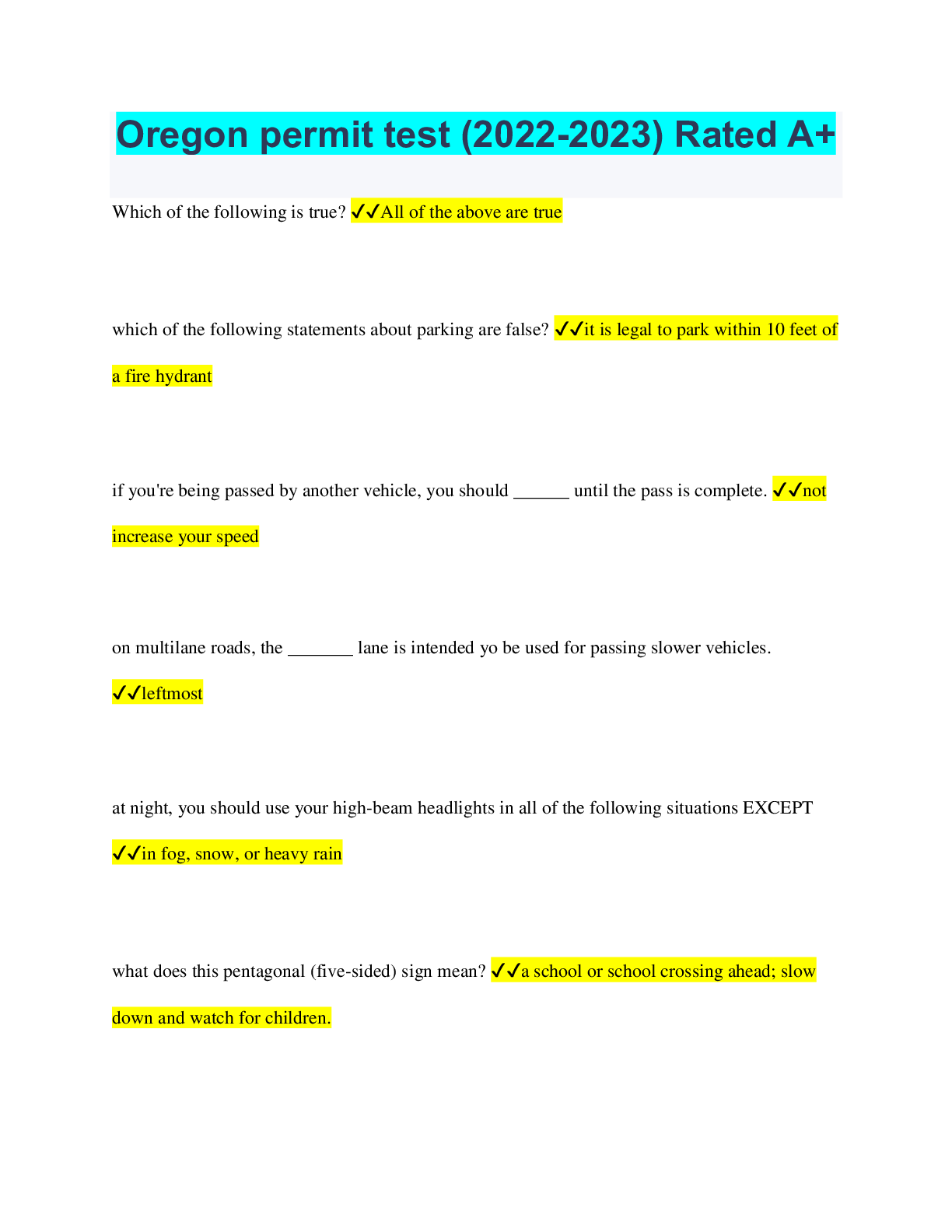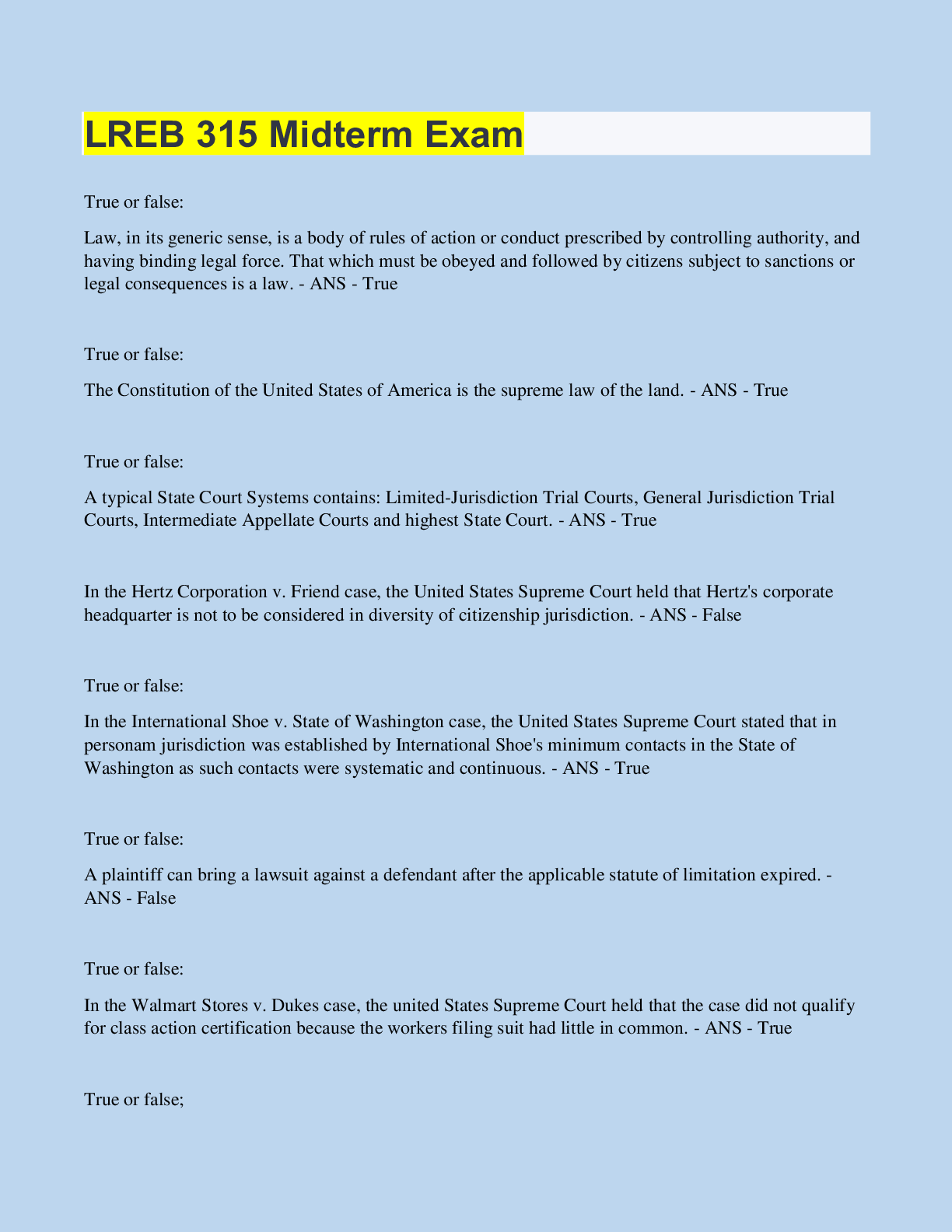Risk Management and Insurance > QUESTIONS & ANSWERS > OPERATIONAL RISK MANAGEMENT (ORM) Already Passed (All)
OPERATIONAL RISK MANAGEMENT (ORM) Already Passed
Document Content and Description Below
OPERATIONAL RISK MANAGEMENT (ORM) Already Passed Purpose. ✔✔Previously established and reissue policy for Operational Risk Management (ORM) as an integral part of the decision-making process fo... r all navy military and civilian personnel, on or off duty. It involves training and planning at all levels in order to optimize operational capability and readiness by teaching personnel to make sound decisions regardless of the activity in which they are involved. ORM ✔✔is a method to identify hazards, assess risks and implement controls to reduce the risk associated with any operation. CNO (N09F) ✔✔shall provide policy for ORM in the Navy and ensure specific applications of the ORM process are integrated into Navy Occupational Standards. Fleet Commanders, Echelon II Commanders and Type Commanders ✔✔provide uniform force wide guidance for identifying areas where existing instructions, standard operating procedures and command-specific applicatons and requirements be augmented with ORM as per this instruction Naval Education Training Command (NETC) shall ✔✔(1) Develop curricula for, and incorporate ORM instruction at all points of accession and each level of formal leadership training, General Military Training (GMT), and all courses where safety or force protection is addressed, i.e., initial warfare qualification schools, war-fighting tactics or strategy courses, etc. Serve as the course curriculum model manager and the course control authority for ORM. (2) Integrate the ORM process and its specific application to pertinent subjects into fleet tactical training and Personnel Qualification Standards (PQS). (3) Integrate specific applicatons of the ORM process into Navy Occupational Standards for the Navys Individual Training Standards. (4) Include ORM in the orientation and training of all personnel, military and civilian. The level of training will be commensurate with rank, experience and leadership position. Naval Manpower Analysis Center ✔✔shall incorporate the ORM process into Naval Standards, curricula, and where ever specific applications warrant additional requirements. Commander, Commanding Officer (COs) or Officer-in-Charge (OICs) shall: ✔✔One officer and one senior enlisted are qualified as ORM instructors (additional officer and senior enlisted qualified members are encouraged based on number of personnel and unit size). They should hold significant leadership and supervisory positions in Major Departments such as Supply, OPS, Maintenance, Air, Engineering and Weapons/Combat Sytems. Action. ✔✔This instruction is effective immediately upon signature. Commands shall publish and update existing instructions or standard operating procedures to augment this instruction with command-specific applications and requirements as appropriate. (ORM) ✔✔a. Is a decision making tool used by personnel at all levels to increase operational effectiveness by identifying, assessing, and managing risks. By reducing the potential for loss, the probability of a successful mission is increased. b. Increases our ability to make informed decisions by providing a formal operational risk management process. c. Minimizes risks to acceptable levels, commensurate with mission accomplishment. The amount of risk we will accept in war is much greater than what we should accept in peace, but the process is the same. Correct application of the ORM process will reduce mishaps and associated costs resulting in more efficient use of resources. Terms ✔✔a. Hazard - Any real or potential that can cause personal injury or death, property damage or mission degradation or damage to enviorment. b. Hazard Severity - An assessment of the expected consequence, defined by degree of injury or occupational illness that could occur from exposure to a hazard. c. Mishap Probability - An assessment of the likelihood that, given exposure to a hazard, an accident will result. d. Risk - Chance of adverse outcome or bad consequences; such as injury, illness, or loss. Risk level is expressed in terms of hasard probability or severity. e. Risk Assessment - A structured process to identify and assess hazards. An expression of potential harm, discribed in terms of hazard severity, accident probability, and exposure to hazards. f. Residual Risk - Risk remaining after controls have been identified and selected. g. Operational Risk Management (ORM) - The process of dealing with risk associated within military operations, which includes risk assessment, risk decision making and implementation of effective risk controls. Risk Assessment Code (RAC) ✔✔An expression of the risk associated with a hazard that combines the hazard severity and mishap probability into a single arabic numeral. Process ✔✔a. Identify Hazards (Step 1) Assess Hazards (Step 2) Make Risk Decisions (Step 3) Implement Controls (Step 4) Supervise (Step 5) ORM Process Levels ✔✔Time-Critical - An "on the run" mental or oral review of the situation using the five step process without recording the information on paper. Risk Assessment Matrix. ✔✔A matrix can be used to accomplish the second step of the ORM process. Using a matrix to quantify and prioritize the risks does not lessen the inherently subjective nature of risk assessment. However, a matrix does provide a consistent framework for evaluating risk. Hazard Severity ✔✔(1) Category I - The hazard may cause death, loss of facility/asset or result in grave damage to national interests. (2) Category II - The hazard may cause severe injury, illness, property damage, damage to national or service interests or degradation to efficient use of assets. (3) Category III - The hazard may cause minor injury, illness, property damage, damage to national, service or command interests or degradation to efficient use of assets. (4) Category IV - The hazard presents a minimal threat to personnel safety or health property, national, service or command interests or efficient use of assets. Mishap Probability ✔✔The probability that a hazard will result in a mishap or loss, based on an assessment of such factors as location exposure (cycles or hours of operation), affected populations, experience or previously established statistical information. Sub-category A - ✔✔Likly to occur immediately or within a short period of time. Expected to occur frequently to an individual item or person or continuously to a fleet, inventory or group. (2) Sub-category B - ✔✔Probably will occur in time. Expected to occur several times to an individual item or person or frequently to a fleet, inventory or group. Sub-category C - ✔✔May occur in time. Can reasonably be expected to occur some time to an individual item or person or several times to a fleet, inventory or group. Sub-category D - ✔✔Unlikely to occur. Risk Assessment Code (RAC) ✔✔The RAC is an expression of risk that combines the elements of hazard severity and mishap probability. RISK MATRIX ✔✔RISK MATRIX PROBABILITY A B C D I 1 1 2 3 II 1 2 3 4 III 2 3 4 5 SEVERITY IV 3 4 5 5 RAC Definitions: ✔✔1 - Critical risk 2 - Serious risk 3 - Moderate risk 4 - Minor risk 5 - Negligible risk Last pg ✔✔read orm flow chart [Show More]
Last updated: 2 years ago
Preview 1 out of 9 pages
.png)
Buy this document to get the full access instantly
Instant Download Access after purchase
Buy NowInstant download
We Accept:

Also available in bundle (1)
.png)
Individual-Managing Your Risk Bundled Exams Questions and Answers 100% Pass
Individual-Managing Your Risk Bundled Exams Questions and Answers 100% Pass
By Nutmegs 2 years ago
$20
15
Reviews( 0 )
$10.00
Can't find what you want? Try our AI powered Search
Document information
Connected school, study & course
About the document
Uploaded On
Feb 02, 2023
Number of pages
9
Written in
Additional information
This document has been written for:
Uploaded
Feb 02, 2023
Downloads
0
Views
111

.png)


